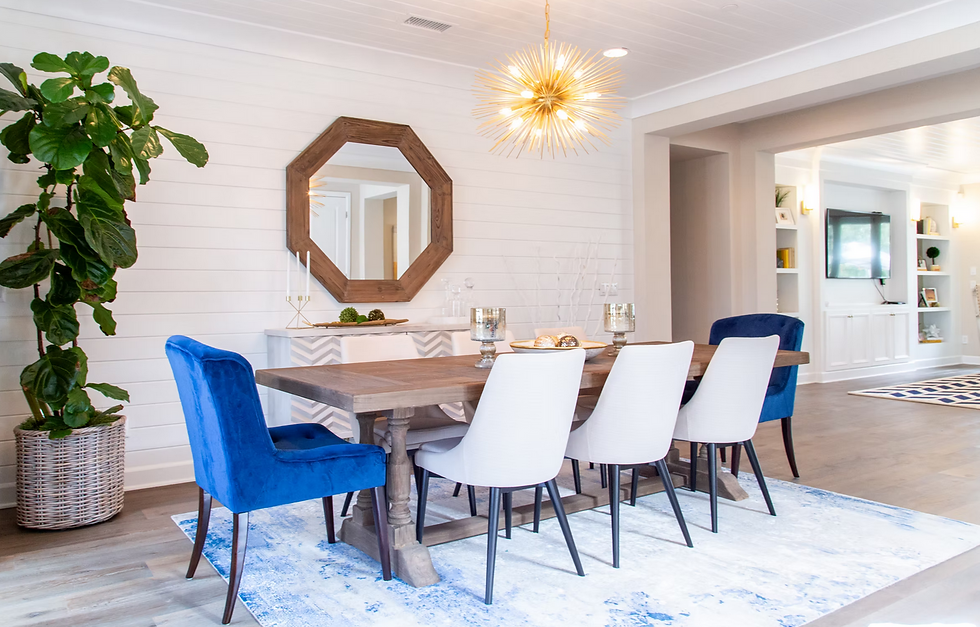Great Ideas On The Proper Way To Talk To Designers About Your Distinct Design Style
- Vision Interiors
- Apr 13, 2021
- 4 min read

When you are preparing to work with a pro on a home job, whether it's an architect, landscape designer, interior decorator or another design professional, properly communicating your preferences in a clear and concise way can help your designer in perfectly understanding exactly what you're looking for out.
By gathering inspiration and thoroughly assessing your likes and dislikes, you will be equipped to have these essential conversations with your designer.
Make a Love List and a Not-for-Me List
You may have already heard that it's generally a great idea to gather images and ideas of things that you like when you are preparing to meet with an interior designer -- but have you ever thought about making a list of the things that you do not appreciate? Perhaps surprisingly, those dislikes can be just as crucial.
Attempt to Get Visual
A majority of interior designers' job is highly visual, so it makes sense that the best way to communicate your likes and dislikes is through images. This keeps things clear and concise. As an example, if you think of"desert design" as being southwestern with a fantastic amount of natural wood and colorful textiles, but your designer is envisioning more of a Palm Springs midcentury desert type of feel, conflict is very likely to happen.
However, when you can point to a photograph and say,"I love this," or"I really don't like this look," you and your design pro can get on the same page almost instantly. .
Include Images Which Directly Relate to Your Job
A great place to start is gathering images for your likes and dislikes lists with examples of the specific type of job you are planning on. If you are going to be working with a landscape designer or landscape architect, for instance, be on the look out for photographs of landscapes.
If you are looking to hire an architect for a home remodel or custom build, our interior designer suggest you seek out photos of exteriors and whole-house designs. If you are redesigning your kitchen, start looking for more kitchen photographs. We believe you get the picture.
However Include Some Less On-Topic Photos Too
Don't be afraid to add a few images that don't directly relate to the sort of job but are nevertheless a great example of a specific style you love -- or hate, as the case may be. Lifestyle, food and garden images can be wonderful examples of color palettes and can offer your design expert a far better handle on your overall style than just the project photographs.
Practice Being Picky
When you first begin filling those idea books with photographs, give yourself an opportunity to have free rein to select as many photos as you want. Enjoy it! However, once you're ready to go back in for a second look, it's time to get picky. Try and focus on narrowing down each list to the top 10 to 20 finest examples.
As a result, not only will this give your design pro a more manageable amount of images to examine, but it is going to provide you practice making design-related decisions as well. The more you flex that design power, the easier it's going to be to talk about your likes and dislikes.
Attempt To Get Specific
Being able to point to an image you love or hate is helpful, but confusion and miscommunications can still arise if you don't specify exactly what it is about the space that you like or do not like.
You might be thinking about the color palette, but your interior designer may focus on the furniture design -- and they unfortunately won't know if you do not tell them! To make things even easier a notice beneath each photo in your idea book that explains in words exactly what it is about the space that made it is comprised by you.
Use the following checklists as a guide, and see how many you can include on your lists.
THINGS YOU LOVE Checklist:
Favorite color or colorsColor palette or combination of colors that appeals to youFurniture you loveA room where you love the mood or general vibeIf you are looking at architecture, a house or overall space that appeals to youIf you're looking at landscapes, a whole yard that captures the general feeling you are afterSpecific features you definitely want to include
NOT FOR ME Checklist:
Specific colors or shades of colors that you have a strong aversion toMotifs or finishes that are not your cup of teaPet peevesColor combinations that you do not like togetherA room where you do not like the overall mood or vibe Stumped? If you've gotten this far, you deserve a huge pat on the back.
It is not easy to pin down your style -- and remember, you don't have to nail it. Usually, your design expert is there to walk you through this entire process. However, the more thought you have put in on the front end, the easier it'll be for you and your designer to have a fruitful working relationship. To that end, if you have gone through these exercises and are still having difficulty determining your personality, you might want to think laterally: Are there any restaurants, brands or stores that exemplify your loves and hates?
As long as the places you have chosen are ones that your designer is familiar with (or can easily find images of), this can be a helpful addition to your style information. Always bear in mind that although it is crucial to be able to communicate your preferences for your interior designer, it is just as important as soon as you have made your initial thoughts and feelings clear to step back and trust your interior designer to think of some creative ideas that you wouldn't have thought of yourself.
Will the all be things you love? Maybe not, and you can always work to get to a place you love. But then again, you may just surprise yourself by enjoying something that you never thought you would, thanks to an interior designer's creative vision.




Comments